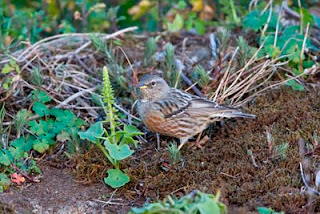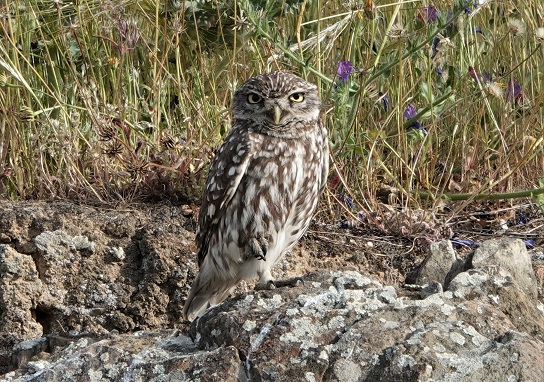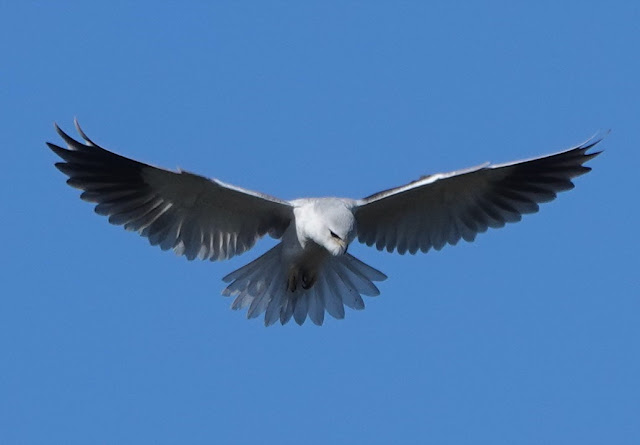Accentor curiosities
The mornings have been crisp and days cloudless and I stood at Montánchez Castle. The view was magnificent through northwards to the Gredos mountains over a 100 kms away. Snow was visible only on their peaks, much less than there should be by this time of year: testiment to the long winter drought that we have endured. I was looking for a bird which breeds at the highest points of the Gredos (which reach over 2,500 metres above sea-level)but moves to lower altitudes in the winter: the Alpine Accentor. One still needs to climb in winter to find them. I had found some earlier in the winter on the highest point of the Villuercas mountains to the east, near the town of Guadalupe, at 1,600 metres. Here at Montánchez I was lower, less than 1000 metres, but Alpine Accentors do habitually spend the winter on prominent hilltop rocky peaks, places like Montánchez, often where Moorish castles had been built. Some winters a small flock of Alpine Accentors winter here, but I was having difficulty finding any. After forty minutes of carefully checking the fortifications and the boulder-strewn hillside I was returning to my car when up-popped my quarry. Perched on the top of an outcrop, on the shady, mossy northern side of the castle was a single Alpine Accentor. They are beautfully marked and plump birds, factionally bigger than a Greenfinch - I could tell because a bright male Greenfinch came and sat right beside it. The accentor faced me and then turned sideways, as if to show-off its patterned plumage: rusty red streaks on the sides of the underparts, blackish wing coverts with bold white tips forming wingbars, a white tip to the tail and heavily streaked back. It is a much sought-after winter visitor here, because to see it in the summer you need to be high in the rocky Alpine-zone altitude. The photo here by John Hawkins, was taken a few years ago at the same spot as I found this bird.
Its close relative the Dunnock is also a winter visitor to Extremadura, with a small breeding population restricted to the montane scrub, above the tree-line from 1,500 metres above sea-level. The birds we get in the winter are probably from as far a field as Scandanavia. It has understated plumage, which when looked at closely features rather attractive streaks and hues of greys and browns. Several winters ago a Dunnock achieved fame by being the 100th species recorded in the garden! They are quiet and rather secretive and the combination of their apparent demure behaviour and plumage led the Victorian cleric, the Reverend Frederick Morris to cite the species as an example to his church-goers on how to behave:
Unobtrusive, quiet, and retiring...humble and homely...sober and unpretending in its dress, while still neat and graceful, the Dunnock exhibits a pattern which many of a higher grade might imitate.....
Little did he know that Dunnocks betray a bewildering array of sexual relations, ranging from monogamous pairs, to males with two or more females and females with two or more males. It is one of the most promiscuous of songbirds, as revealed by the fascinating studies by Nick Davies in Cambridge. The Reverend Morris could not have picked a more inappropriate example. Indeed the Alpine Accentor displays even more complex mating systems. More on this subject can be found in Tim Birkhead's superb book The Wisdom of Birds (2008).





Comments